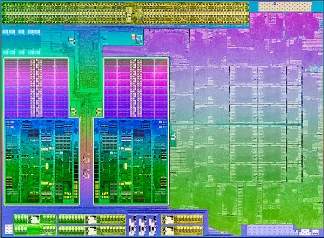AMD has officially rolled out its next-generation Accelerated Processing Units (APUs).
Originally codenamed Trinity, the second-generation A-Series targets a wide range of systems, including mainstream and ultrathin notebooks, All-in-Ones, traditional desktops, home theater PCs and embedded designs.

AMD spokesperson John Taylor told TG Daily that Trinity – essentially designed “from the ground up” – offers double the performance per watt compared to its first-gen predecessor.
Trinity also boasts up to a 29% increase in CPU performance (3.2 GHz), with higher processor speeds facilitated by AMD’s Piledriver CPU core, which dynamically shifts power between the CPU and GPU depending on specific app requirements.
In addition, the APU features Radeon HD 7000 Series graphics – driving a 56% (graphics) performance boost over first-gen APUs. Combined, the CPU and GPU cores deliver more than 700 gigaflops of computing performance and 6-8 hours of battery life in real world scenarios (up to 12 hours idle).
“More than 100 applications and games are now accelerated by AMD APUs, with Trinity offering users optimized Web-based video experience, thanks to multiple plug-ins for Google Chrome, Firefox and Internet Explorer 9 that make it easy for users to access AMD Steady Video technology,” said Taylor.
“6 recent applications that have been optimized for use on AMD A-Series APUs include Adobe Photoshop CS6, WinZip 16.5 and VLC Media Player. And of course, AMD A-Series APUs are also well-positioned to take advantage of the transition to Microsoft’s upcoming Windows 8 operating system.”
So how does Trinity stack up against Intel’s Ivy Bridge?

Well, analyst Rob Enderle recently commented on a head-to-head comparison, saying: “In each test which included productivity, video enhancement and file compression, AMD’s ‘Trinity’ technology wasn’t just faster, it was substantially faster.”






